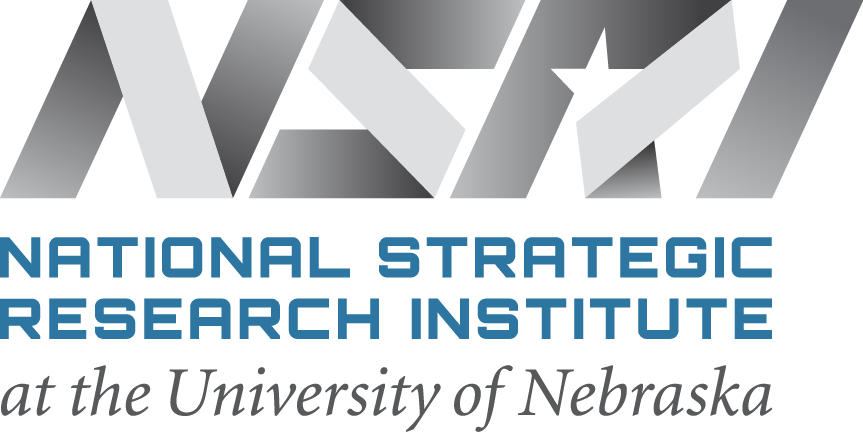
Dr. Keely Buesing stood in a small stall at the Animal Science Complex on East Campus of the University of Nebraska–Lincoln, one hand on a hog and one hand grasping a unique abdominal catheter. She was about to inject the pig’s abdomen with microbubbles. The animal’s lungs were compromised, and the experimental microbubbles were designed to oxygenate its blood until the animal could be treated.
Dr. Buesing looked up at that moment and realized a couple of Jersey cows were watching over the stall wall. It made her laugh.
Truth be known, she was skeptical whether the experiment would work.
“I’m very skeptical by nature and doubtful that anything will work until I see it with my own eyes,” she explained.
Two hours later, her skepticism had vanished.
“To see the oxygen levels rise and keep them raised for two to three hours versus having the animal die from a severe lung injury was a turning point for me,” Dr. Buesing said. “It lit a fire under me to keep going. This could actually help humans.”
As a clinical trauma surgeon, Dr. Buesing had seen many human patients with traumatic lung injuries, and treatment was always frustrating.
“Whether the patient has broken ribs or has been shot or stabbed, or suffers from smoke inhalation, it all affects the lungs,” she said. “Some have to be on long-term ventilators, or they die because the current therapies don’t work. I get frustrated with the inadequacy of standing in front of parents saying, ‘I’m sorry I can’t offer your son or daughter more.’”
The frustration, Dr. Buesing explained, drove her to look for different answers.
In 2015, Dr. Buesing was invited to help develop a microbubbles therapy with two colleagues who are now her project partners. Dr. Mark Borden of the University of Colorado co-invented the microbubbles themselves, and Dr. Ben Terry of Terry Research Lab at the University of Nebraska—Lincoln used his engineering expertise to come up with a way to deliver them to the abdomen of a suffering patient — the abdominal catheter.
The National Strategic Research Institute at the University of Nebraska helped bring the three together to explore ways to use the technology to treat warfighters on the field of battle. Traumatic lung injuries are common in battle and soldiers often die before they can get treatment. Microbubbles can help them survive long enough to reach the nearest field hospital.
The microbubbles project is the first major research project Dr. Buesing has been a part of since taking an associate professor position at the University of Nebraska Medical Center in Omaha, Neb.
“It’s been exciting and stimulating to me as a physician-scientist,” she said.
She loves seeing “both sides of the aisle,” as a doctor seeing patients every day, and as a scientist working on technology that can directly impact patients.
Although the microbubbles are a revolutionary new technique, Dr. Buesing pointed out that traumatic lung problems have been a challenge for generations.
“Many people were looking for the golden key to lung injuries in the 1950s and 1960s,” she explained. “It’s not a new problem, but we are trying to make it more modern and help the patient instead of just slapping a different set of tires onto the car.”
According to Dr. Borden, Dr. Buesing is uniquely suited for this work.
“She is an excellent physician,” he said. “I have the utmost trust and respect for her based on the hundreds of conversations we’ve had over the years. It is amazing to me that she can balance clinical and research work as she does. It shows the incredible flexibility she has to move back and forth between the different domains. And she doesn’t mind getting her hands dirty to get the job done.”
Dr. Borden said Dr. Buesing’s experience will be critical to take the microbubbles project to a Phase I human clinical trial.
“She will be as important, if not more important, as we move to Phase II and Phase III,” he said. “Every technology needs a champion, and that’s what she is — a champion of technology.”
The team is preparing to present the technology to the FDA.
“We are more than ready,” Dr. Buesing said. “We have the personnel and the experience — we just need the money to get there.”
A company called Respirogen is helping with the next steps to finding investors. However, the project has been on hold due to a shift in focus to find novel coronavirus solutions.
Dr. Buesing worked with Dr. Terry to develop technology allowing two patients to use the same ventilator. The technique hasn’t had to be used yet, but she believes the work will help when the technology is needed in the future.
Problem-solving and technology come naturally to Dr. Buesing, who is not one to sit still, even on days off. At home, she’s often found covered with mud from her latest landscaping project and is a self-proclaimed lawn care nut. She and her husband always have DIY projects going. Her husband’s spare time is often spent rehabbing classic cars.
“We like to say he’s the car surgeon,” Dr. Buesing laughs. “We both get bored if we’re not working with our hands.”
Spoken like a true physician-scientist who is not afraid to get her hands dirty.
###

